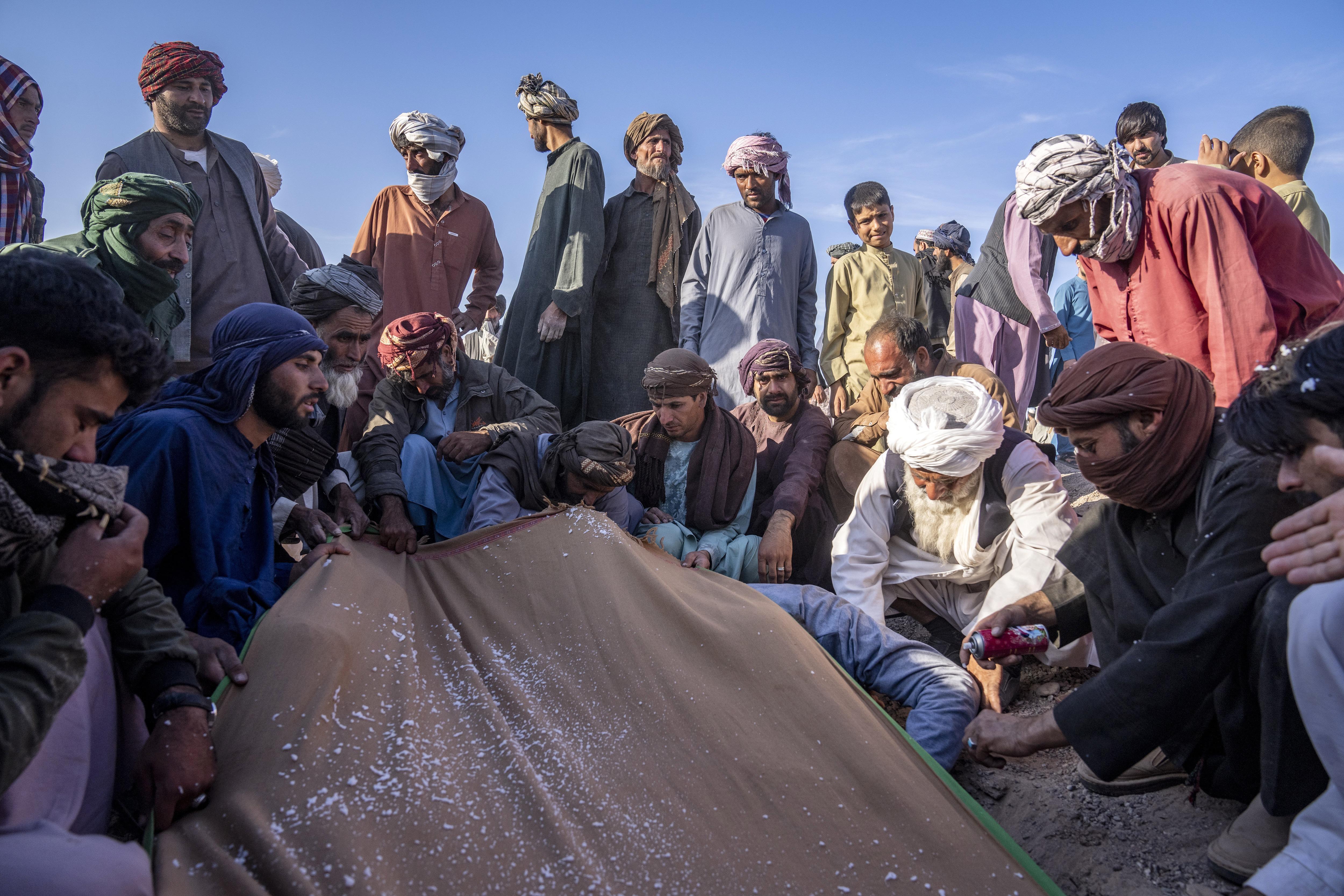 Afghans bury relatives killed in an earthquake at a burial site in Zenda Jan district in Herat province, Afghanistan, Oct 9, 2023. (PHOTO / AP)
Afghans bury relatives killed in an earthquake at a burial site in Zenda Jan district in Herat province, Afghanistan, Oct 9, 2023. (PHOTO / AP)
HERAT, Afghanistan - Rescuers on Tuesday scaled back operations in Afghanistan's devastated northwest as chances of finding survivors diminished 72 hours after one of the world's deadliest earthquakes, while villagers in the area held mass funerals for their dead.
At least 2,400 people were killed and more than 2,000 injured, the Taliban-run government said, in the multiple earthquakes that struck northwest of the city of Herat, leveling thousands of homes. Most of the casualties were women and children, the World Health Organisation said.
Relief and rescue efforts have been hampered by crumbling infrastructure after decades of war, while a dearth of foreign aid, which once formed the backbone of the economy, has dried up since the Taliban took over.
"The operation is almost done," spokesman for the Disaster Management Ministry Janan Sayeeq told Reuters, adding that rescue efforts were continuing in some villages.
The UN Humanitarian Office on Tuesday put the toll from the quakes at 1,294 deaths and 1,688 injuries, with 485 people missing. But it added that these figures were from the Zinda Jan district alone, and four other districts had also been hit, where assessments are continuing.
The earthquakes flattened buildings in some 20 villages in the northwest, Afghan officials said. The UN report said that "100 percent" of homes had been destroyed in Zinda Jan, along with six schools
Sayeeq said a final casualty toll would be released soon.
ALSO READ: China offers condolences to Afghanistan over deadly quake
Hemmed in by mountains, Afghanistan has a history of strong earthquakes, many in the rugged Hindu Kush region bordering Pakistan.Saturday's temblors - with a 6.3 magnitude - were one of the deadliest in the world this year, after the quakes in Türkiye in Syria which killed around 50,000 people.
The earthquakes flattened buildings in some 20 villages in the northwest, Afghan officials said. The UN report said that "100 percent" of homes had been destroyed in Zinda Jan, along with six schools.
Siah Aab, one of the villages in the district, lost at least 300 residents, locals said. Funeral prayers were held for the dead before they were buried, wrapped in blankets, in freshly dug graves.
"I have lost my four daughters-in-law, my four sons and my grandchildren," villager Taj Mohammad, 60, said. He said 11 of his family members had been killed in the disaster.
The UN's humanitarian office has announced $5 million worth of assistance for the quake response, but immediate material support has come from just a few countries.
Afghanistan's healthcare system, largely reliant on foreign aid, has faced crippling cuts in the two years since the Taliban took over and much international assistance was halted.
READ MORE: UN: Afghanistan meth trade surges amid heroin crackdown
In addition to medical and food aid, survivors are in dire need of shelter as temperatures drop, the head of the World Health Organization's emergency response said.
Abdul Sattar, a grave digger in Siah Aab, said the living needed as much support as they can get.
"Their first hope is God, followed by help from other countries," he said, adding that he and others had already dug more than 500 graves.


